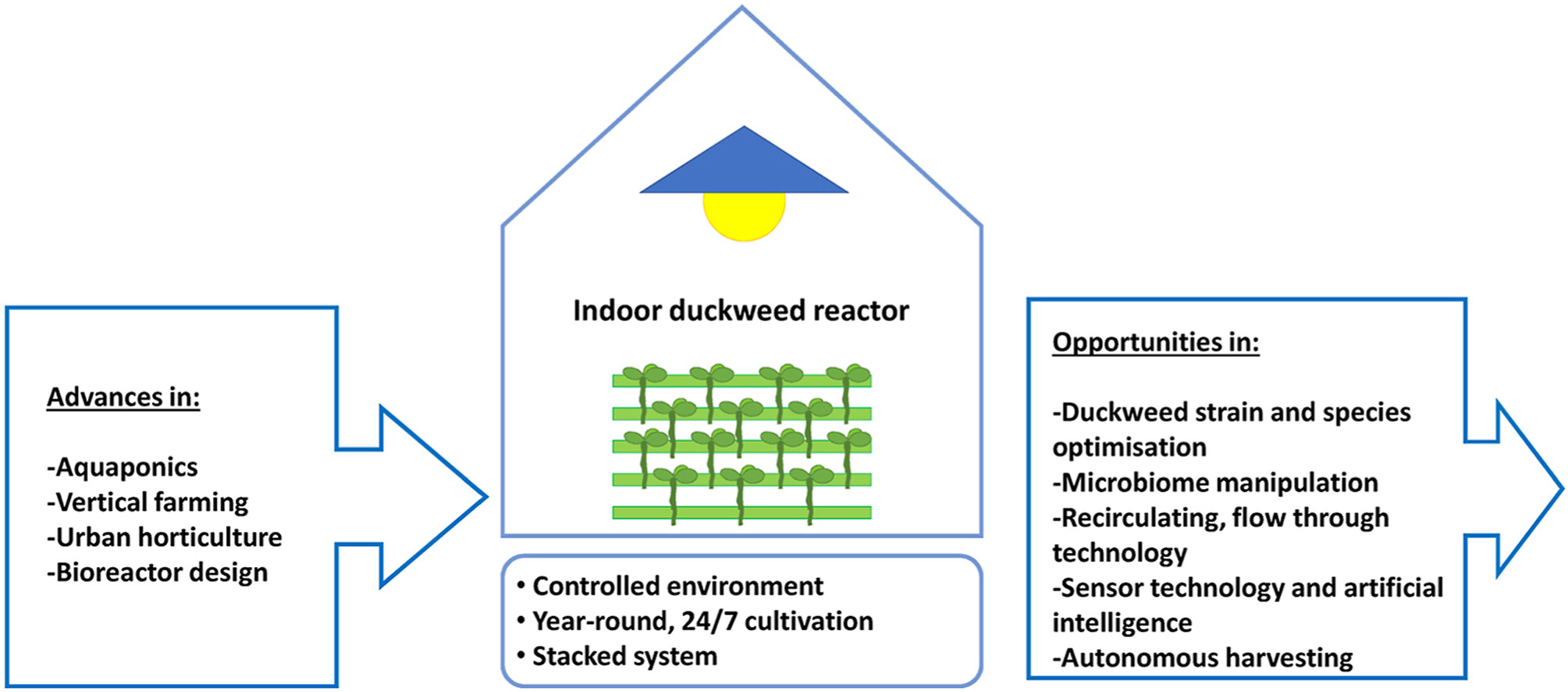News
Research identifies 6 steps to advance innovative indoor duckweed cultivation

Newly published paper from Brainwaves’ researchers highlights the challenges and opportunities for large-scale indoor Lemnaceae growth
Nothing beats duckweed (Lemnaceae) when it comes to fast growth! These amazing plants can double in biomass in just over a day. However, these plants don’t just grow fast, they are also highly nutritious, and can be used in animal feed or as human food. By culturing these plants indoors, a steady stream of fresh produce can be generated, irrespective of seasons.
A new peer-reviewed study, led by Brainwaves’ researchers Dr. Neil Coughlan and Prof. Marcel Jansen, outlines six key knowledge gaps that currently prevent the development of indoor duckweed cultivation systems. Entitled “Duckweed bioreactors: Challenges and opportunities for large-scale indoor cultivation of Lemnaceae” the study goes on to show how technological advances in urban and vertical farming can support the development of duckweed cultivation.
Published in the Journal of Cleaner Production, following an extensive review of current knowledge and practices, the study highlights recirculating, flow-through technology that can optimise nutrient supply and growth. It shows how sensor support systems, in combination with artificial intelligence, can facilitate autonomous cropping and even harvesting. The study also demonstrates that further exploration of basic duckweed-biology will support the production of high protein biomass (e.g., selection of best strains, optimisation of light, and manipulation of the duckweed microbiome).
Importantly, the study concludes that despite challenges, there are now realistic opportunities to develop and operate high-capacity, autonomous, controlled cultivation of duckweed under indoor conditions, for a broad range of purposes.
So, watch this space and see how the Brainwaves project develops using this incredible native plant!
